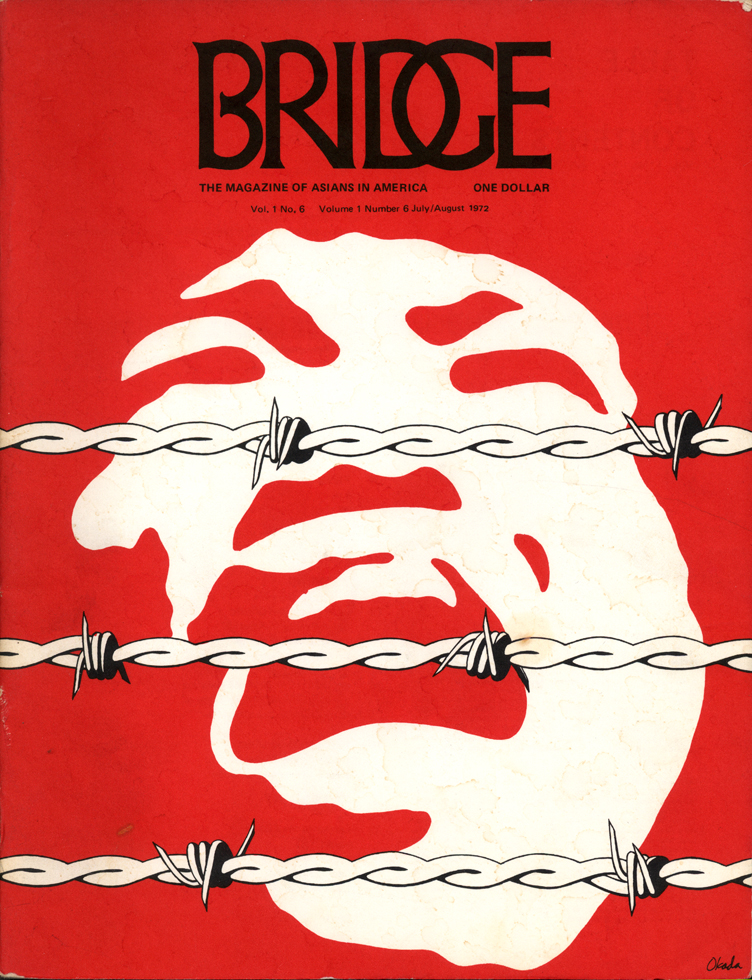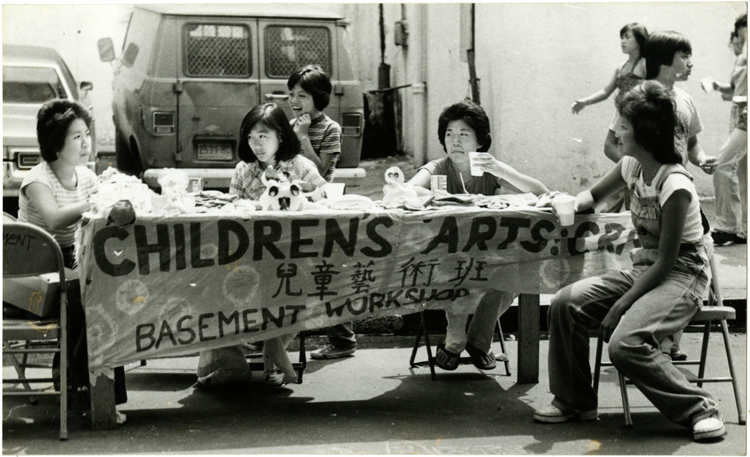Bridge: the Magazine of Asians in America was a landmark Asian American publication. Historically, the mainstream American press had spoken for the white majority, either ignoring the experiences of Asian Americans and other people of color or covering their neighborhoods and members disparagingly. On the other hand, the ethnically Asian press were often propagandistic and touted the accomplishments of singular ethnic groups rather than drawing from unified experiences and issues across ethnic lines. Bridge was born from the Asian American Movement’s need for an alternative Asian American press that could speak to a diverse array of perspectives and social issues and mobilize its readers. Its name expressed its mission to not only bridge Asian America with white America, but to bridge experiences between Asian American groups. The Basement Workshop published its first issue of Bridge in 1971 and would continually evolve the publication’s initial focus towards China and overseas Chinese to its iconic blend of Asian American national political issues, criticism, art, poetry, and fiction. In 1979, Bridge ceased its affiliation with Basement Workshop and ultimately ended in 1985. Bridge would prove to be one of only three Asian American publications of the era with far-reaching readership, influence, and staying power.
Collections馆藏Collections馆藏Collections馆藏Collections馆藏Collections馆藏Collections馆藏Collections馆藏Collections馆藏Collections馆藏Collections馆藏Collections馆藏Collections馆藏Collections馆藏Collections馆藏Collections馆藏Collections馆藏Collections馆藏Collections馆藏Collections馆藏Collections馆藏Collections馆藏Collections馆藏Collections馆藏Collections馆藏Collections馆藏Collections馆藏Collections馆藏Collections馆藏Collections馆藏Collections馆藏Collections馆藏Collections馆藏Collections馆藏Collections馆藏Collections馆藏Collections馆藏Collections馆藏Collections馆藏Collections馆藏Collections馆藏Collections馆藏Collections馆藏Collections馆藏Collections馆藏Collections馆藏Collections馆藏Collections馆藏Collections馆藏Collections馆藏Collections馆藏Collections馆藏Collections馆藏Collections馆藏Collections馆藏Collections馆藏Collections馆藏Collections馆藏Collections馆藏Collections馆藏Collections馆藏Collections馆藏Collections馆藏Collections馆藏Collections馆藏
Bridge Magazine

24 April 2019 Posted.
Bridge Magazine Vol. 1 No. 6. Courtesy of Rocky Chin, Museum of Chinese in America (MOCA) Collection.
杂志《桥》第一卷第6号,陈兆文捐赠,美国华人博物馆(MOCA)馆藏

